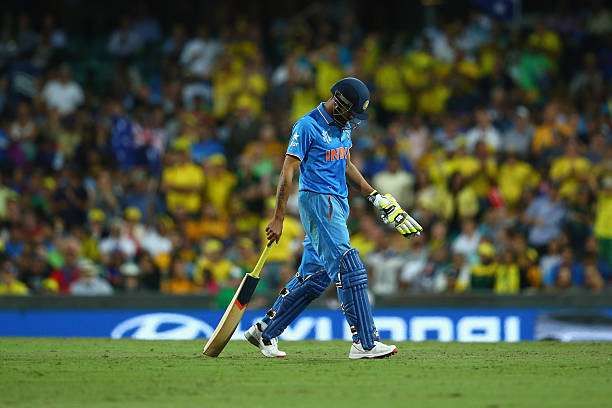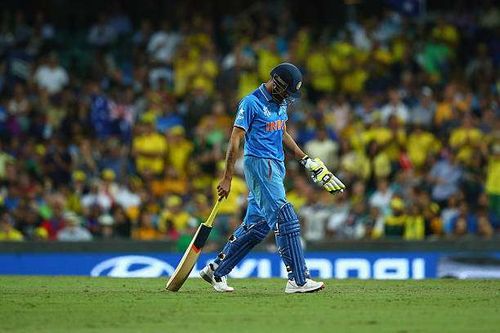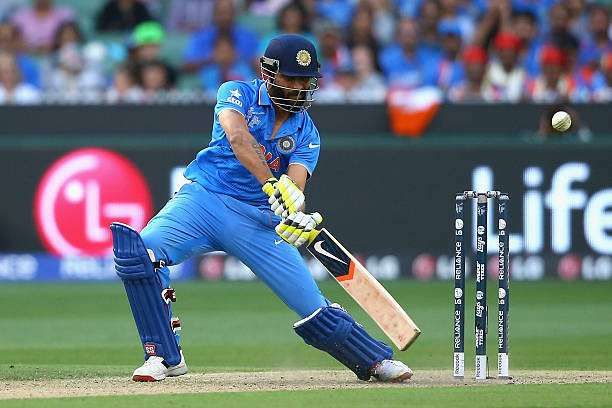
Is Ravindra Jadeja's batting becoming a liability?
India vs England. 1st ODI, 15th Jan 2017.
India needs 33 runs to win from 36 balls. Four wickets in hand. Ravindra Jadeja, playing on 13, sees a short delivery outside off stump and decides to heave it out of the stadium. He clears his left leg and plays an audacious pull but toe-ends the ball and the catch is taken at mid-on.
India is seven down, with the tail enders now being exposed to England’s crafty pace bowlers. Hardik Pandya though keeps calm and steers India home, ensuring Jadeja’s blunder is forgotten.
Inda vs West Indies. Fourth ODI, 02nd July 2017.
India requires 17 runs from 16 balls. Four wickets in hand. Jadeja playing on 11, watches a slower ball on a full length and clears his left leg to hoick it down the ground. He fails to get the timing right and long-on takes an easy catch.
India is seven down. Holder tightens the noose in the next two overs as West Indies clinches the game by 11 runs. The blame rests on Dhoni’s shoulders as he fails to finish the game off. Meanwhile, when Jadeja was dismissed, the commentator could be heard asking, “Was this shot needed?”
The spin duo of Graeme Swann and Monty Panesar tormented the young Indian batting order in 2012. Sensing a humiliating and rare home Test series defeat, the Indian selectors made drastic changes in the team combination for the final Test.
They replaced the openers, drafted in new spinners and included a batting all-rounder for the number six position. His primary role was that of a middle-order batsman and the fact that he could bowl was a bonus. The selection was a reward for achieving a staggering yet rare feat in first-class cricket. The Saurashtra batsman notched up three triple centuries, becoming the first Indian and seventh in total to do so.
Also read: The myth of retaining a winning combination
After five Tests, the middle-order batsman, Jadeja, had scored a total of 97 runs at an average of 19.4 and become an integral cog in India’s Test unit. He cemented his place not through his batting but instead his impeccable bowling. He accumulated 27 wickets in his first 10 innings and led India’s spin department.
Since then, the Saurashtra player has made a smooth transition into a lead spin bowler who can bat in the lower order. His bowling exploits kept him in the headlines, making him a star cricketer but his batting too left a mark on occasion.
From his maiden fifty against England that resulted in India’s famous Test win at Lord’s to bailing out India against England at Mohali in 2016 with a composed knock of 90, Jadeja’s batting remained an important asset to Team India.
In ODIs too Jadeja’s batting skills were effective. Against New Zealand in 2014, in the third ODI, his brave innings of 66 allowed India to tie a game which was initially thought to be done and dusted.
However, in the last couple of years, Jadeja’s bowling, as well as batting, has become toothless. Since 2015 the World Cup, he has featured in 17 innings, picking up only 12 wickets. He has received flak for his mediocre bowling performances but fortunately, signs of improvement in his bowling were visible in the West Indies series.
While the focus has remained on his bowling, his declining batting prowess has gone somewhat unnoticed. For Team India, who is still searching for a genuine all-rounder, Jaddu’s rusty batting is a cause of concern.
Since 2015, the left-hander has played 27 innings, accumulating 223 runs at a mediocre average of 18.58 with 32 as his highest score. These numbers are in sharp contrast to his figures during 2013-14. In that span, he piled up 831 runs in 35 innings at an impressive average of 43.73.
Few factors have resulted in this severe decline. The tremendous form of India’s top order in the last couple of years has meant the middle order has received very few chances to bat. And the chances have mostly arrived during the death overs when slogging from ball one is expected and there is no time to settle down.
The changes in the fielding restrictions have also affected the run-flow in the death overs. Since July 2015, between overs 41 and 50, five fielders have been allowed outside the thirty-yard circle. This has affected scoring rates and the bowlers too have honed their skills by adding more variety.
Meanwhile, Jadeja’s batting hasn’t evolved in any aspect and he looks one-dimensional against smart bowlers in the death overs. His trusted shot is still the hoick over mid-wicket or long-on and his struggles against pace have been evident.

Hardik Pandya uses his power and impeccable timing to clear the ropes while Kedar Jadhav’s smart and innovative tricks allow him to find the gaps. Jadeja possesses neither of these weapons and his impatience has, on most occasions, resulted in his downfall.
The 2019 World Cup in England will feature flat wickets and in these conditions, India will require an explosive and sensible lower order batsman who would either need to use his power or street smartness to score boundaries.
Jadeja at the moment lacks both the aforementioned qualities and hence may become a liability. With less than two years left for the biggest ICC event, the left-hander must improvise and become more responsible otherwise the Indian management would be forced to search for alternatives.

